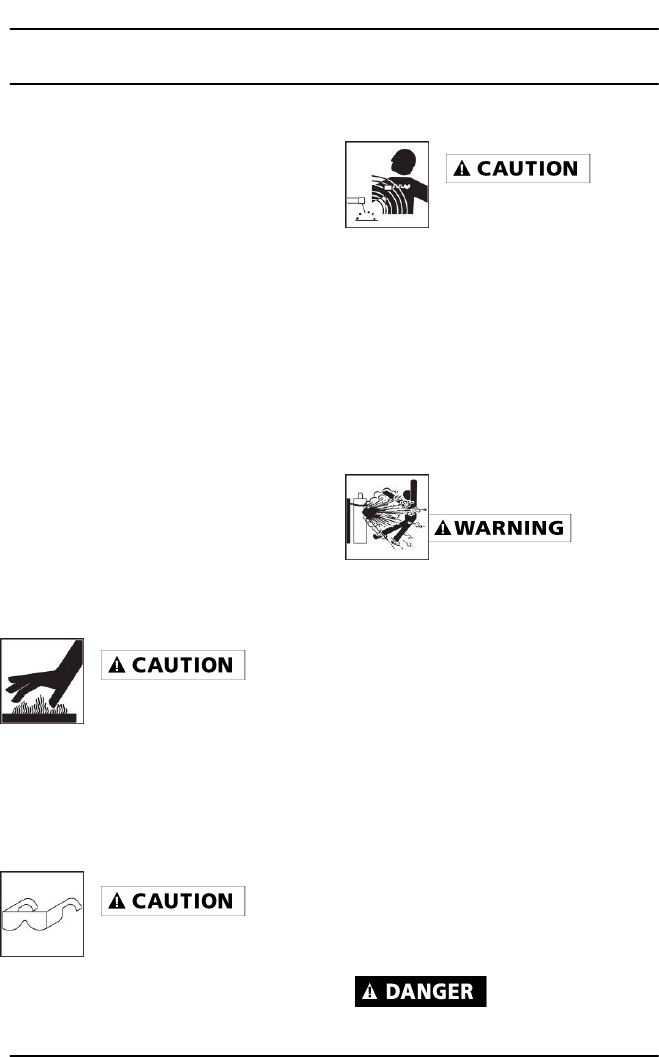
Northern Industrial Welding
6
Operating Instructions and Parts Manual
ST80i
explosive materials.
-Do not operate any electric arc
welder in areas where flammable or
explosive materials are present.
-Remove all flammable materials
within 35 feet of the welding arc. If
removal is not possible, tightly cover
them with fireproof covers.
-Take precautions to ensure that
flying sparks do not cause fires or
explosions in hidden areas, cracks or
areas you cannot see.
-Keep a fire extinguisher close in the
case of fire.
-Wear garments that are oil-free with
no pockets or cuffs that will collect
sparks.
-Do not have on your person any
items that are combustible, such as
lighters or matches.
-Keep work lead connected as close
to the weld area as possible to
prevent any unknown, unintended
paths of electrical current from
causing electrical shock and fire
hazards.
Hot Materials
Welded materials are hot
and can cause severe
burns if handled
improperly.
-Do not touch welded materials with
bare hands.
-Do not touch electrode holder after
welding until it has had time to cool
down.
Sparks/Flying Debris
Welding creates hot
sparks that can cause
injury. Chipping slag off
welds creates flying debris.
-Wear protective apparel at all times:
ANSI-approved safety glasses or
shield, welder’s hat and ear plugs to
keep sparks out of ears and hair.
Electromagnetic Field
-Electromagnetic fields
can interfere with various
electrical and electronic
devices such as pacemakers.
-Consult your doctor before using any
electric arc welder or cutting device
-Keep people with pacemakers away
from your welding area when welding.
-Do not wrap cable around your body
while welding.
-Wrap welding cable and ground
cable together whenever possible.
-Keep welding cable and ground
cables on the same side of your body.
Shielding Gas Cylinders
Can Explode
High pressure cylinders can explode
if damaged, so treat them carefully.
-Never expose cylinders to high heat,
sparks, open flames, mechanical
shocks or arcs.
-Do not touch cylinder with welding
cable.
-Do not weld on the cylinder.
-Always secure cylinder upright to a
cart or stationary object.
-Keep cylinders away from welding or
electrical circuits.
-Use the proper regulators, gas hose
and fittings for the specific application.
-Do not look into the valve when
opening it.
-Use protective cylinder cap
whenever possible.
1.5 Proper Care, Maintenance And
Repair


















